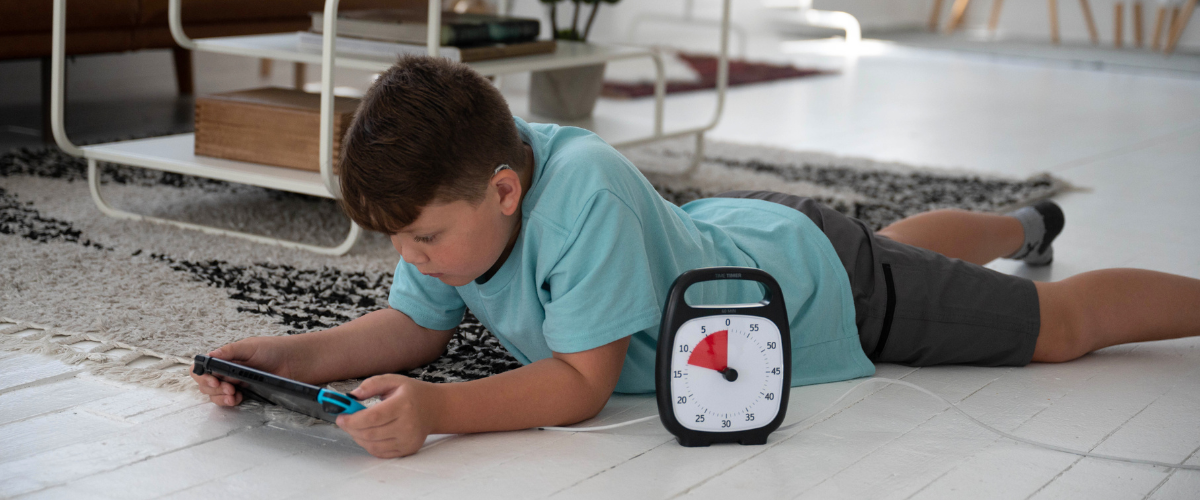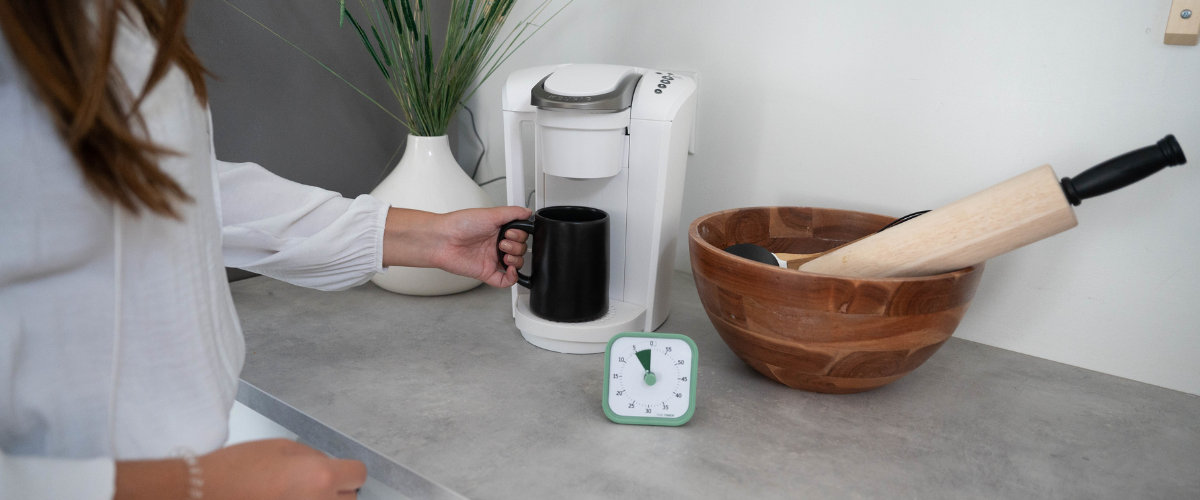A lot occurs in the hours between school dismissal and bedtime. Whether it is sports, music lessons, playing with friends, screen time, there is a lot that demands the energy and attention of children who just spent half their day in school. For that reason, it can be challenging to make sure that kids are spending an appropriate amount of time on their homework.
Introducing a visual timer can be the way to introduce a calm productive rhythm to homework time. Using tools like Time Timer visual timers for building after-school routines can lead to better focus on homework.
How Time Timer Can Be a Game-changer in After-school Routine
-
Universal Design: The elapsing colored disk of Time Timer visual timers gives kids a clear sense of how much time is left with just a glance. We even make a Braille version of our timer, which is useful for kids with visual impairments.
-
Set clear expectations: Setting the timer for 30 minutes of homework provides an unambiguous visual reminder of what is expected.
-
Create visual boundaries: Using a Time Timer visual timer to show how long each activity lasts, and how much time is left at any given time, is useful for keeping kids on track.
-
Encourage independence: A visual timer can be a useful tool for encouraging kids to manage their time without relying on parents to check in on them.
-
Reduce power struggles: The timer becomes a neutral third party that simply sets the time, which can be easier on parents than having to monitor the kids.
Building the Ideal After-School Routine
Every family is different, but here’s a sample routine that balances downtime, productivity, and connection:
-
Recharge: Whether they are returning from school or an after-school activity, let kids unwind for a little bit before getting into homework. A Time Timer visual timer can give them a visual cue for how long they have to relax before transitioning to the next activity.
-
Homework Block: Break homework into chunks. The key is to make sure the kids do not rush to "beat the clock"; instead of saying that math homework must be completed in 15 minutes, the 15-minute block should be for doing math homework, followed by a five-minute break, then another block to finish the homework. Repeat this for other subjects. Let kids choose the order of tasks to keep them interested.
-
Chores or Responsibilities: Dinner prep, feed pets, or tidy their backpacks. It reinforces responsibility and gives them a sense of contribution.
-
Family Time: Whether it’s playing a board game or taking a post-dinner stroll outdoors, this time is for reconnecting and winding down.
Supporting Different Learning Styles
-
Visual learners: Color-coded schedules can be made on the Time Timer Dry Erase board, which fits one of our Time Timer MOD visual timers.
-
Kinesthetic learners: Timed movement breaks can be good for staying energized during homework sessions.
-
Auditory learners: Reading and thinking through homework problems out loud can be good for students who find they learn best when talking to teachers and hearing lectures.
Time Timer visual timers support all styles by making time tangible and reducing the cognitive load of “keeping track.”
The Time Timer App is available on smartwatches, tablets, desktop PCs, and smartphones. This app mirrors the physical timer’s simplicity, with additional perks like setting multiple timers, customizing durations, and even using it on a smartwatch. The app can be useful when doing the homework on the go, or if the Time Timer visual timer is being used by someone else in the house.
Tip: Pair Time Timer with a distraction-free homework zone. Keep devices out of reach unless they’re needed for assignments.
Troubleshooting Time-Management Issues
-
Procrastination: A Time Timer visual timer can create a useful urgency, encouraging kids to focus on the task at hand and not distract themselves with interruptions. Again, just be sure that kids do not rush themselves to "beat the clock", as the ultimate goal is to do well on the homework.
-
Overwhelm: Segmenting homework time can be useful for keeping kids on track. The visual timer also helps kids focus on the task at hand and only worry about what they need to work on in the current timespan.
-
Resistance: Overcoming this issue can be difficult, but letting kids customize their own homework routine can be useful. Letting them set personal times for each homework segment can be better than having the parents arbitrarily decide the time.
Celebrating Success
Celebrate wins big and small. Completing a homework segment without having to go into overtime, or avoiding distractions, can be good.
Incentives like snacks, extra playtime, or even a "bonus" added to allowance can help build motivation.
Homework doesn’t have to feel like a chore. With a good routine held up by tools like Time Timer, homework can get done with consistency, communication, and compassion.





